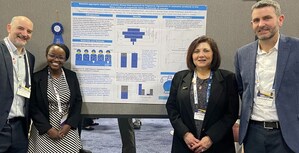WOODCLIFF LAKE, N. J., May 1, 2012 /PRNewswire-USNewswire/ -- The Research Institute for Fragrance Materials, Inc. (RIFM) now has available, from its web site at www.rifm.org, human health safety assessments on Macrocyclic and Cinnamyl Phenyl Propyl fragrance Ingredients. Found in the Publications section of the RIFM site, Toxicologic and Dermatologic Assessments for Three Groups of Fragrance Ingredients: 1) Macrocyclic Ketones, 2) Macrocyclic Lactones and Lactides, 3) Cinnamyl Phenyl Propyl was published in Food and Chemical Toxicology, Vol 49, Suppl 2S, Dec 2011 and is already one of the journal's top ten downloaded publications. Included in the review of the three groups are 24 related Fragrance Material Reviews (FMRs). Printed copies can be ordered from the RIFM Online Store.
(Logo - http://photos.prnewswire.com/prnh/20101215/DC17717LOGO)
These fragrance ingredients are used in many different product types, including cosmetic, personal care, household and air care. Based on all the data available, RIFM's human health safety assessment shows that, at the current levels of use, these materials are practically nonirritating, have a low sensitization potential, no genotoxicity potential and a low order of repeat dose toxicity. The materials were already reviewed by RIFM for environmental impact and showed no grounds for environmental concern.
The opinion of the independent Expert Panel that reviews RIFM's research is that, under the anticipated levels of exposure in fine fragrance and consumer products, there are no safety concerns regarding use of these materials.
The group assessment approach that RIFM used to test these fragrance materials is based on structural relationship and enables consistency in predicting metabolism and toxicity. It also conserves resources and reduces duplicate testing. The group summary publications provide scientific and regulatory communities with all the data available to RIFM. This includes RIFM sponsored studies, company sponsored studies and data collected from peer-reviewed scientific literature. Most importantly, they provide the Expert Panel's safety assessment and are used by industry to meet REACH requirements. Dr. Anne Marie Api, Vice President, Human Health Science said, "We now have 13 group summaries and hundreds of FMRs published and many have appeared in Food and Chemical Toxicology's list of most cited papers which underscores the depth of the science produced at RIFM."
RIFM is the international scientific authority for the safe use of fragrance materials. RIFM generates, evaluates and distributes scientific data on the safety assessment of fragrance raw materials found in personal and household care products. Through extensive research, testing and constant monitoring of all scientific literature available, RIFM maintains its Database as the most comprehensive source worldwide of physical-chemical, toxicological and eco-toxicological data associated with known fragrance and flavor materials. All of RIFM's scientific findings are evaluated by an independent Expert Panel—an international group of dermatologists, pathologists, toxicologists, reproduction, respiratory and environmental scientists. The Expert Panel evaluates the safety of fragrance ingredients under conditions of intended use and publishes their results in peer-reviewed scientific journals. The decisions of the Expert Panel regarding restrictions of use are also published in the IFRA Standards. For more information about RIFM and its activities, visit www.rifm.org or e-mail [email protected].
Contact: Marie Gartshore, Communications Manager
e-mail: [email protected]
tel: 201.689.8089, ext. 111
SOURCE Research Institute for Fragrance Materials, Inc.
WANT YOUR COMPANY'S NEWS FEATURED ON PRNEWSWIRE.COM?
Newsrooms &
Influencers
Digital Media
Outlets
Journalists
Opted In




Share this article